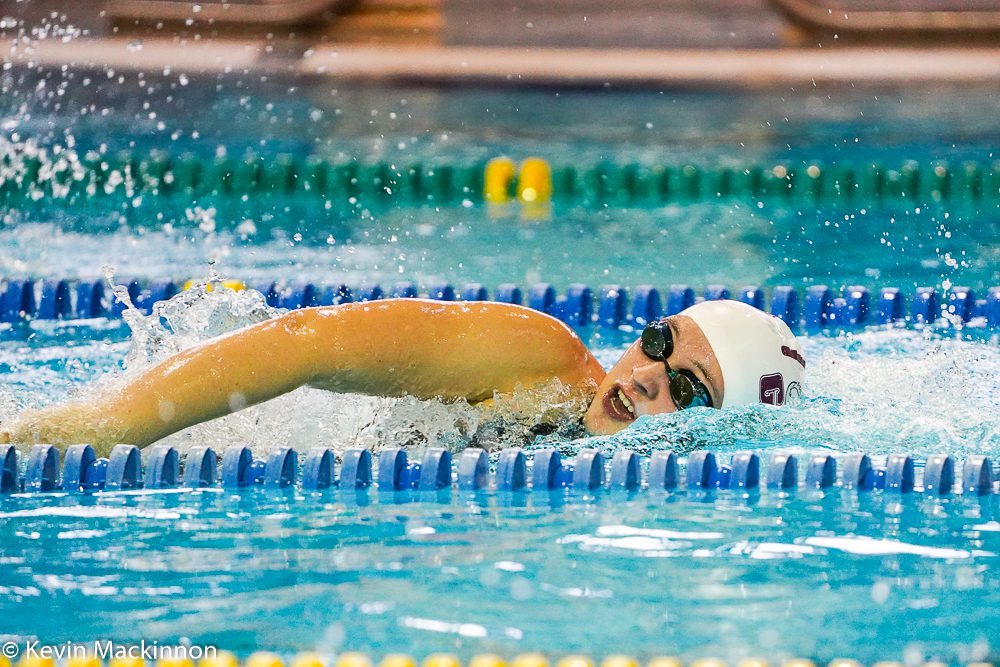Swim form tips for triathletes: Fall warm up drills that improve technique
Follow these simple warm up drills to a faster swim split next race season.

by Clint Lien
For the majority of Canadian triathletes, it’s a perfect time to focus on your technique. During race season I shorten warm-ups substantially, but in the fall almost half the session will be “warm-up,” where we work on technique.

When it comes to technique there are two main questions you need to ask yourself:
1 Are you flat and tight in the water?
2 Is your elbow above your wrist, and your wrist above your fingers during your stroke?
I haven’t even mentioned breathing or cadence, but if you can answer yes to these questions before the end of the off-season, you’ll be setting yourself up for some dramatic improvements to your swimming. Since most of us will have answered “no” to these questions, here’s what you should be doing as part of your warm up:
Flat and tight in the water:
Good swimmers are tight. They’re smooth and graceful, but they are not floppy. Their hips don’t sink and they don’t sway from side to side. One of the most powerful way to create that tightness is through a strong engaged core. Doing sit-ups and plank is great, but, for a swimmer, kicking is better. I like a small kick board, a snorkel and fins if you’re not a good kicker. Stronger swimmers don’t need fins, but it’s okay to use them.
- Start with ultra short strong bursts: 10 meters very hard, 15 meters easy x 10.
- Use the snorkel to keep the head low and your body line straight. Build these until you’re able to do 25 meters quite strong x 10. Make sure you’re kicking from the hips and not the knees.
- Vertical kicking is excellent as well. Put your arms over your head, keep your body straight and streamlined. Dolphin or crawl kick. Start with 15 seconds strong x 10. Build up to 30 seconds.

Elbow above the wrist. Wrist above the fingers:
If this is a problem for you, then awareness is the first order of business. Many swimmers don’t know they’re dropping their elbows. Addressing this with a coach is best, but a swim mate or a friend with a camera can help.
- A single arm drill with a snorkel (so you can look at your arm) with the non-stroking arm sitting on a kick board is a good place to start.
- Do 25 meters with the right arm and then 25 meters with the left arm, then drop the kick board and swim 50 with both arms. If you’re in a 50-meter pool then put the board between your legs and use it as a shark pull buoy.
- Don’t rush this one. Enter the water fingers first and make sure the wrist is slightly cocked, which puts the fingers below the wrist and the wrist below the elbow. Move through the stroke and make sure you’re maintaining the rule. Don’t over think it. Stroke strong and stay focused.
- Start with 3 x 100 and build to 6 x 100 with 10 seconds rest on each.
There’s an excellent way to work on both issues with a single piece of equipment – that’s the dreaded band. My old coach used to say if you can swim with a band without any other equipment, you can swim.
- Take a punctured tube and create a 4 inch rubber loop so it can secure your ankles firmly. You don’t want to be able to kick with the band on.
- If you’ve not used the band before, you’ll probably find your toes dragging along the bottom of the pool before you take five strokes.
- Let yourself almost fail – then engage a few dolphin kicks to bring your legs back up. Repeat.
- If you’re absolutely hopeless with this, a snorkel will help, but also see if you can find a set of small kids pull buoys then start with them.
- Once you learn to engage your core and keep your hips up, and you’re able to efficiently pull water with a high elbow and wrist, you’ll eventually have that magic moment and figure out how to stay straight. I recommend starting with 8 x 25 and work up to 12 x 50.
The off-season is a great time to work on your swim technique. Use this time to work on body alignment and an efficient stroke. Keep it simple and incorporate these few drills and you’ll be setting yourself up well for the always-on-the-horizon race season.
Clint Lien is the head coach of Victoria’s Mercury Rising Triathlon www.mercuryrisingtriathlon.com
